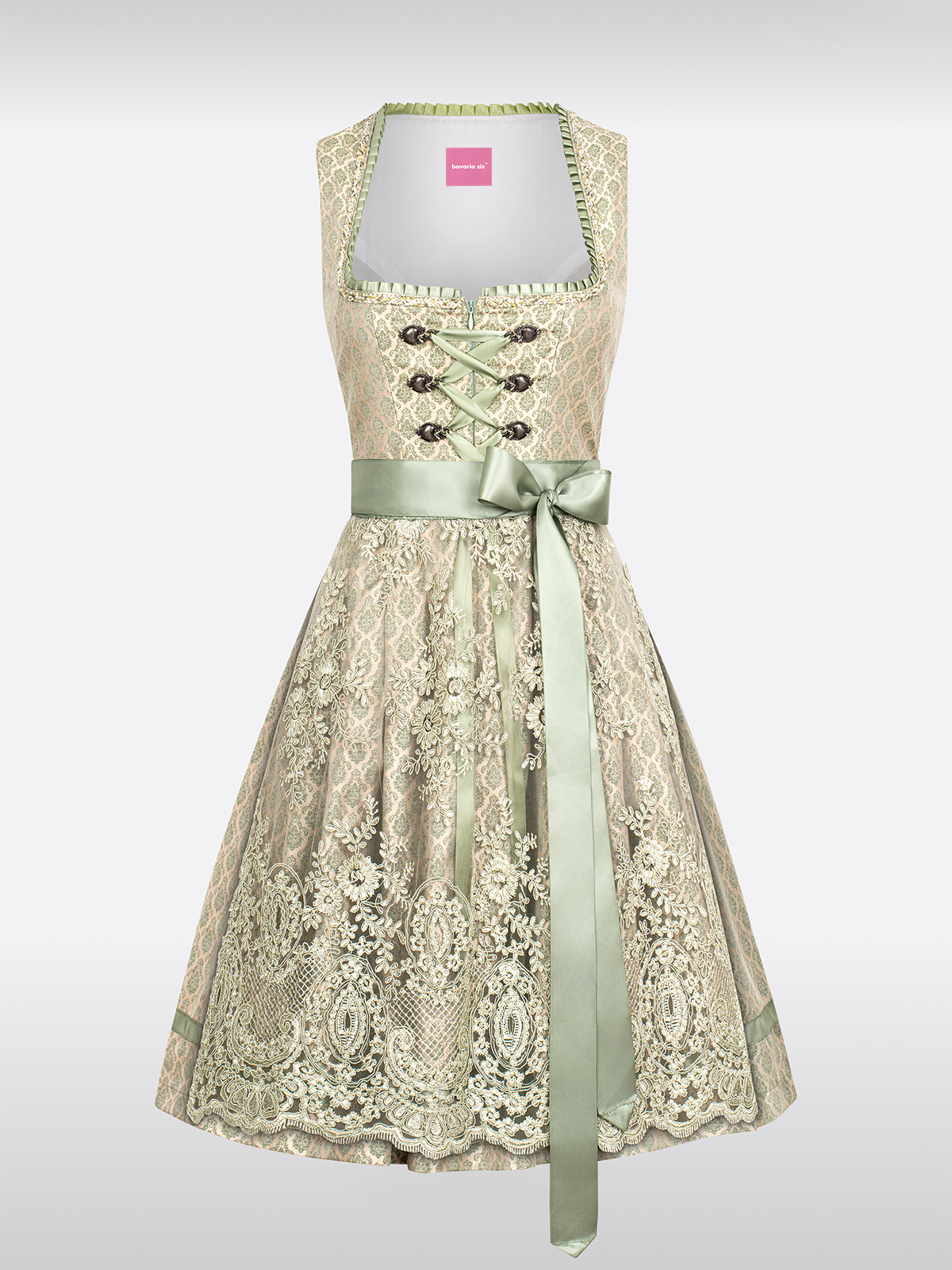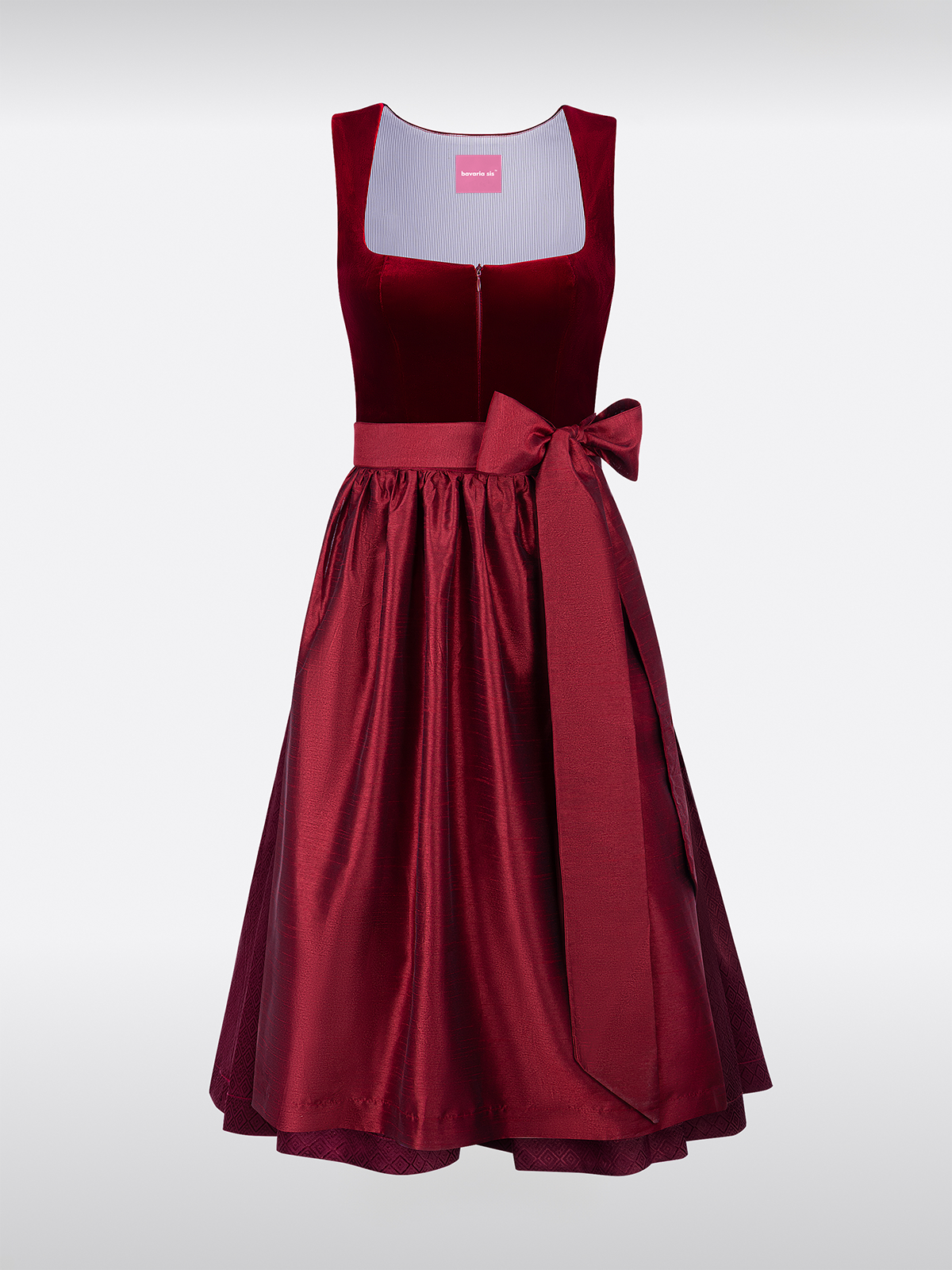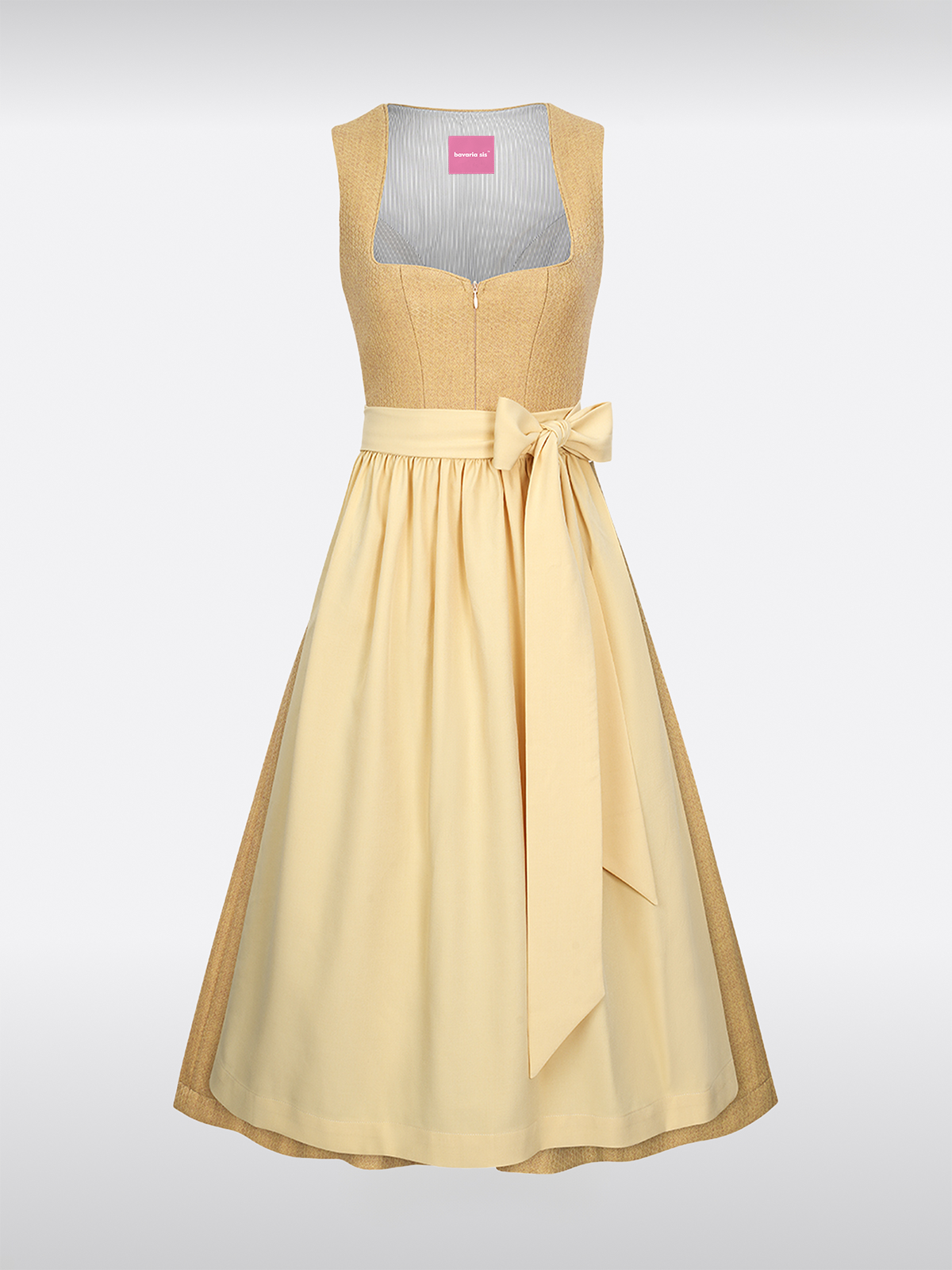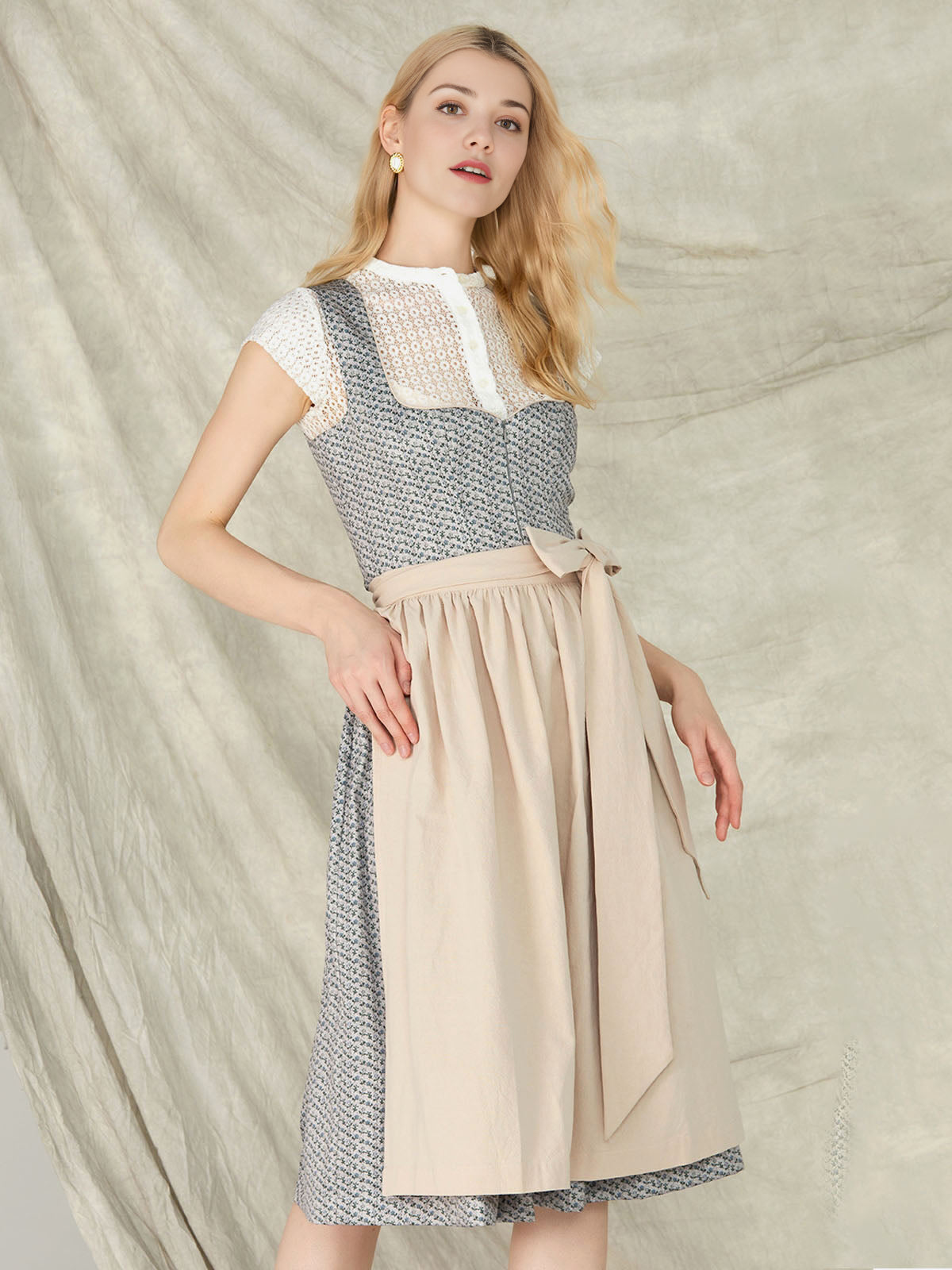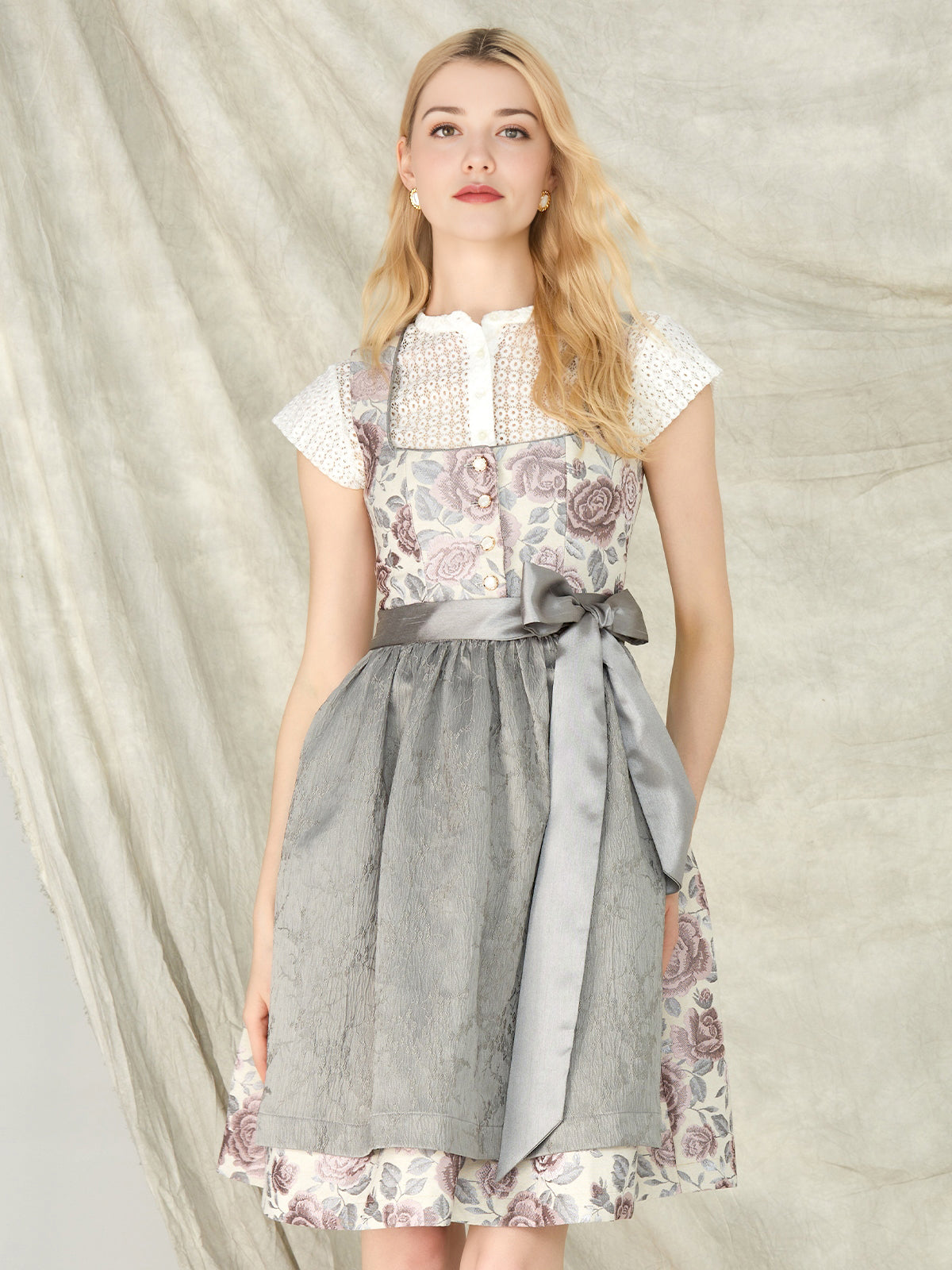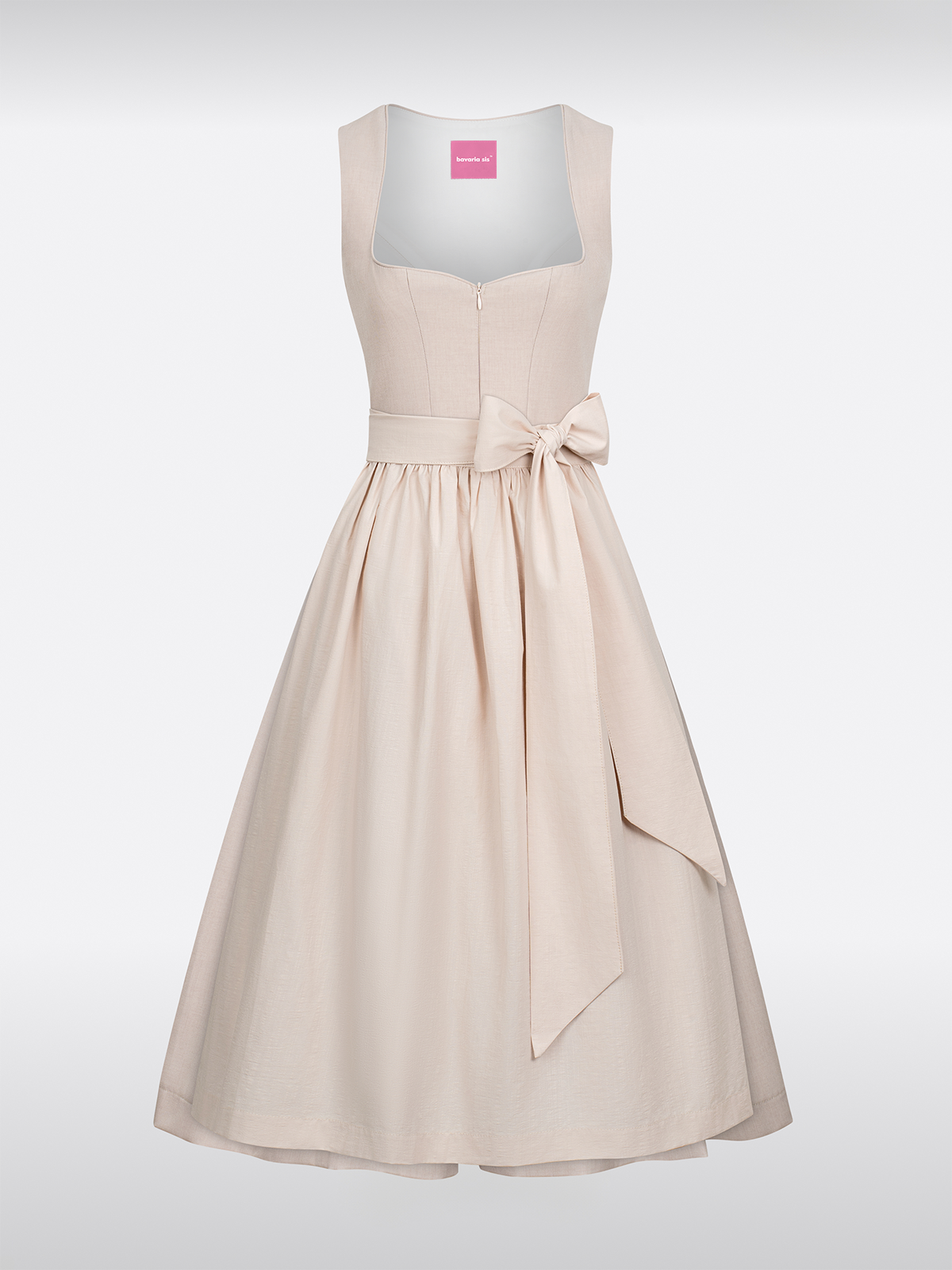Introduction: The Renaissance of a German Cultural Treasure
In recent years, a phenomenon has conquered the German fashion scene: The The dirndl, a traditional costume once seen exclusively at Oktoberfest and folk festivals, has now become a versatile fashion statement. Social media analytics show that hashtags like #dirndl green or #green dirndl have been used over 120,000 times on Instagram and TikTok in the last 12 months – a clear sign that young generations are interested in their cultural heritage but do not want to be reduced to stereotypical representations.
The The dark green dirndl, a color that radiates both elegance and closeness to nature, is at the center of this trend. But how did a dress originally designed for practical work in the Alps become a must-have in the urban wardrobe? This article analyzes the design evolution, the expansion of scenarios, and the stylistic innovations that have green dirndl from tradition to modernity.
Chapter 1: From Long to Short – The Design Revolution of the Dirndl
1.1 Tradition vs. Innovation: The Key Differences
The classic Dirndl consists of a blouse, a corset, an apron and a skirt that usually reaches to the knee. Colors like dirndl green or dirndl dark green symbolize fertility and nature—elements deeply rooted in Bavarian culture. But modern designers have broken these conventions:
- Short cuts: The “mini dirndl” version, which reaches mid-thigh, is perfect for warm summer evenings or music festivals.
- Fluorescence and neon: Colors like electric green or lime green give the green dirndl a futuristic touch.
- Asymmetrical skirts: Uneven hem lengths or curved cuts create movement and dynamism.
1.2 Materials and sustainability: A new quality standard
Today's Dark green dirndls combine linen or cotton with recycled polyester threads to meet ecological standards. Labels such as "Trachtenwerk" or "Alpenstern" rely on organically certified dyes that enhance the intense dirndl green without environmental damage. These changes reflect consumers' desire to combine tradition and modernity without compromise.
Chapter 2: Scenario Expansion – Where the Dirndl is Worn Today
2.1 Beer festival and beyond: everyday suitability
While the Dirndl Once reserved exclusively for Oktoberfest outfits, it is now worn in a variety of contexts:
- Music festivals: Pair a short green dirndl with Doc Martens boots and a leather bracelet for a rock edge.
- Dates and café visits: A dirndl dark green in velvet look, combined with rhinestone earrings and pumps, exudes romance without appearing kitschy.
- Street style: In Berlin or Munich, hybrid looks with denim jackets or bomber jackets over a dirndl green become commonplace.
2.2 Business casual with Bavarian flair: The “German Office Dirndl”
The biggest surprise of the trend wave? Dirndl has found its way into offices. Under the motto “German Business Costume”, women combine a dirndl dark green with a tailored blazer and loafers. The apron is replaced by a subtle brooch, and the blouse by an elegant silk version.Companies like “Munich Trachten” report a 300% increase in demand for such “office dirndls” since 2022.
Chapter 3: Color as an Identity Marker – The Psychology Behind “Dirndl Green”
3.1 Green as a symbol of nature and individuality
In color psychology, the color green represents harmony, growth, and environmental awareness – values that Gen Z and Millennials want to express in their clothing. dirndl green signals not only cultural affiliation, but also a rebellious spirit against mass-produced fast fashion.
3.2 The variety of green tones: From pastel to dark
- Dirndl Green: A fresh mint green, ideal for summer festivals.
- Green Dirndl: A rich emerald green suitable for evening events.
- Dirndl Dark Green: A deep moss green that is perfect for business contexts.
These variations make it possible to Dirndl to be integrated into every season and every occasion – a clear advantage over monochrome black or red variants.
Chapter 4: Value for money – How to enjoy tradition on a budget
4.1 High-End vs. Fast Fashion: The Market Landscape
- Luxury segment: Designers like “Lodenfrey” sell handmade Dark green dirndls made from cashmere blends cost over 1,000 euros.
- Mid-range: Brands like “Krüger Trachten” offer machine-made versions with genuine mother-of-pearl buttons for 200–400 euros.
- Budget options: Discounters such as H&M or Zara have a “traditional costume collection” in summer 2024 with green dirndl dupes launched for under 80 euros.
4.2 The Sustainability Premium: Why More Expensive Is Often Better
Although cheap versions are tempting, it is worth investing in a high-quality Dirndl green. Handcrafted stitching, genuine leather, and organically certified dyes ensure not only longevity but also ethical production processes.
Conclusion: The Dirndl as a fashion chameleon of the future
The Dirndl has definitely overcome its role as a mere beer festival dress. Through innovative designs, cross-scene combinations and a color palette that dirndl green until dirndl dark green it has become a symbol of cultural hybridity. Whether in the office, at a music festival or at a romantic dinner – the green dirndl proves: tradition and modernity are not opposites, but perfect partners.
In a time when individuality and sustainability are increasingly in demand, this is Dirndl More than just a piece of clothing—it's a statement. And with every new design, every new color variation, and every new scenario in which it's worn, it continues to write its story.

